Why nutrition is the new frontier in the performance of pro cyclists
As pro cycling speed records continue to tumble, Cyclingnews investigates the major role that nutrition is playing in this performance leap
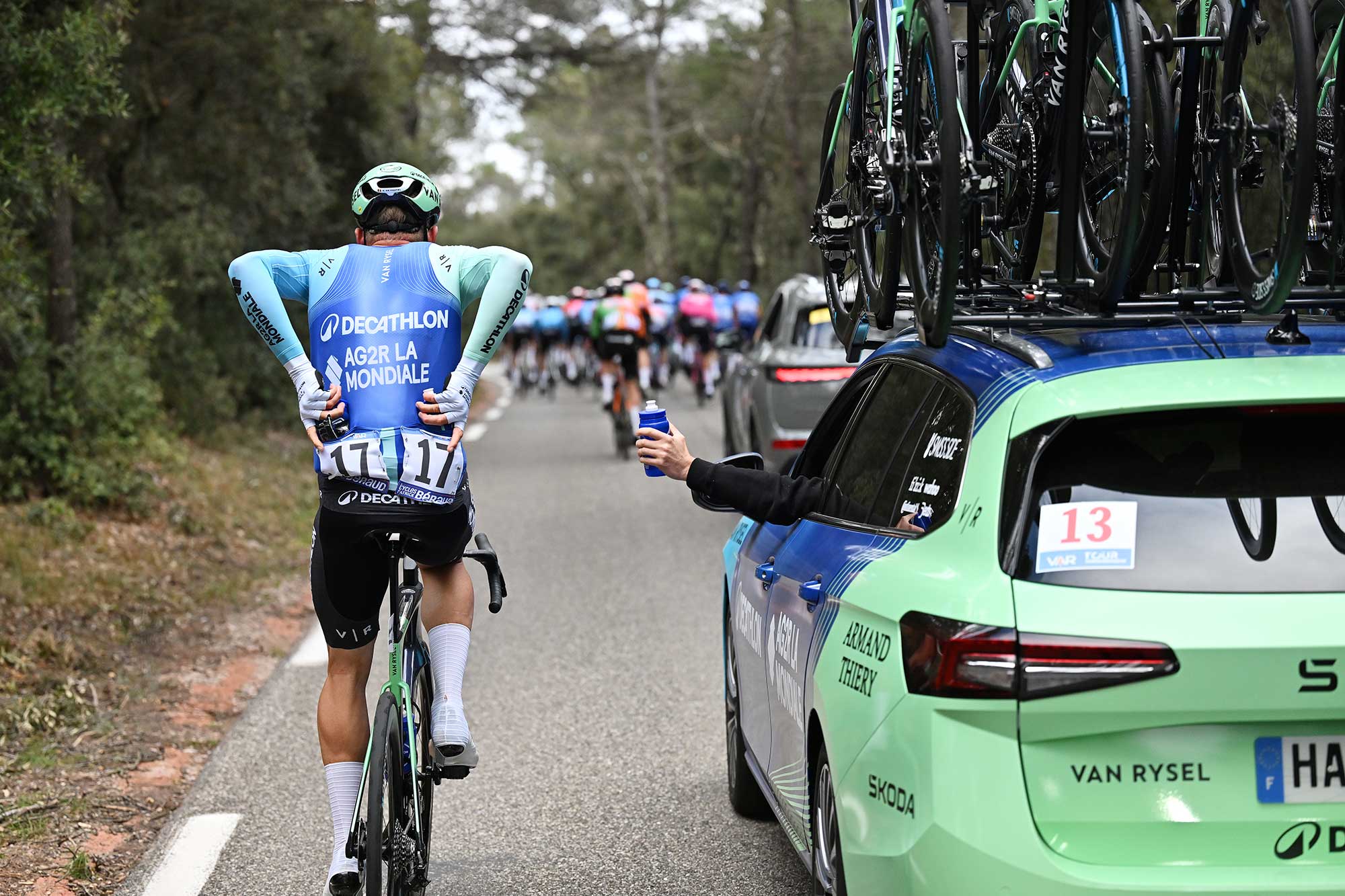
Professional cycling continues to break its own boundaries, season after season. Earlier this year, we shared an in-depth feature on the sport's 'speed evolution' as greater investment and more data-led analysis into technology, training, and overall performance has seen average speed records tumble at several major races.
For context, the 2022 Tour de France was the fastest in the modern era, with a head-turning 42.03 kph average speed. Just 12 months ago, we saw five Spring Classics record their fastest-ever editions, with some having only been set a year earlier.
Despite riding solo for the final 60km of the race, Mathieu van der Poel smashed the
race record at the 2024 Paris-Roubaix, completing the 259.7km route in five hours, 25 minutes and 58 seconds, with an average speed of 47.802 kph.
Now, we hear what you're likely saying at this point: Mathieu van der Poel is a naturally gifted cyclist, he has access to the latest in bike tech from his team's sponsors, and he can tap into expert advice on all aspects of his elite athlete lifestyle from team staff.
But whether you're a fellow pro, an amateur rider, or a mere armchair fan, what can we learn from these leaps forward in performance within the pro cycling world?
Putting aside cutting-edge bike tech - because access to that really depends on the depth of your pockets or the resolve of your financial discipline - and avoiding a 'nature versus nurture' debate on whether we're the typical build for a road cyclist in the first place, one area we can all attempt to learn from is how professional cyclists train and take care of themselves.
With this in mind, we reached out to several WorldTour and ProTour teams for insight into any techniques that are pushing pro cycling's boundaries time and time again.
Interestingly, and to our somewhat surprise, a specific topic repeatedly came up, and it isn't a specific training regime, nor something that takes place strictly on the bike.
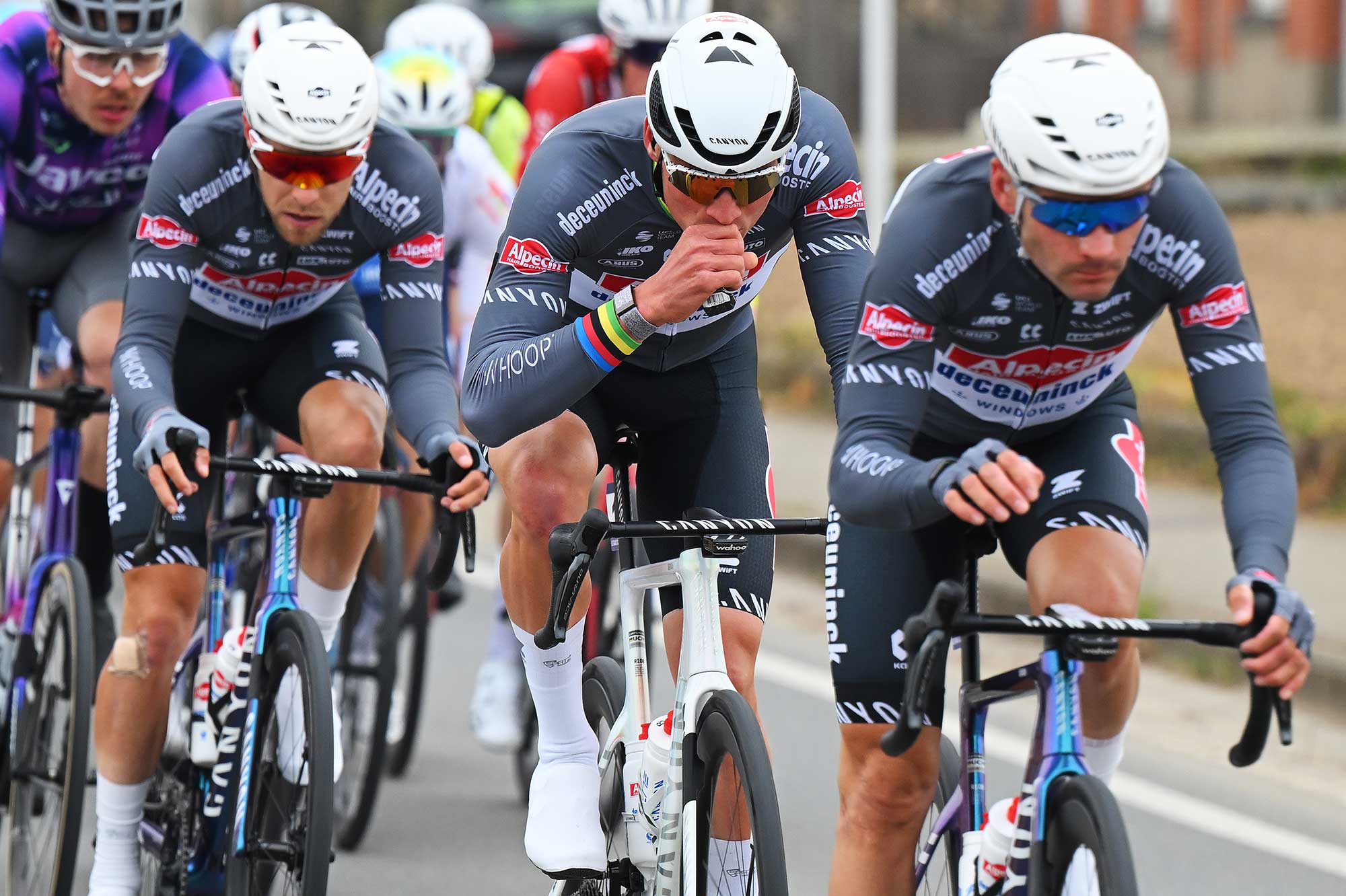
Fueling success
When we asked Mathieu Hejboer, Head of Performance at Visma-Lease a Bike, to explain what has caused such a leap forward in terms of performance over recent years, his response was to the point.
"It's mainly because of nutrition, in my opinion," admits the Dutchman.
"Nutrition and performance, it's under the same roof. It's not a completely different working area. Nutrition and training go hand in hand; if you want the best adaptation on your training, you need to bring in nutrition as well as the other way around, so they don't [work] separately.
Hejboer, who has been part of the Dutch team's setup since 2008, made it clear that training and nutrition could by no means be mutually exclusive if a rider wants to make maximum performance gains.
Sebastian Deckert, Head Coach of leading ProTeam Tudor Pro Cycling, was almost identical in his response when posed the question too.
"I think one of the big changes has been, for sure, nutrition. I think if you view how riders can and should fuel in training and racing, [it] has changed," he replies.
Both coaches believe this change of view towards nutrition has naturally stemmed from an improvement in the range of products.
"The nutrition products have become a lot better, and I think that allows the riders to train and race on a higher level," explains Deckert.
When posing these views to Decathlon AG2R La Mondiale's nutritionist, Dr Julien Louis, he confirms the assumptions.
"Nutrition has become paramount in sports performance, particularly in endurance-type activities, such as cycling, because it can clearly make a difference in terms of performance and it is highly correlated to the capacity to fuel properly and to use the fuel ingested, as well, in-race, pre-race and, of course, post-race."
Louis, who also works as both a Reader in Nutrition and Exercise Physiology at Liverpool John Moores University and a nutritionist with the French second-tier football club, Paris FC, believes nutrition plays a more instrumental role in pro cycling compared to team sports due to recovery being a limiting factor.
"In endurance activities, where there is a big influence on the energy status of the muscles and the athletes overall, [nutrition is] perhaps even more important than, for example, in team sports, where performance is also very related to your technical level, it's less present in the sport of cycling.
"Fueling properly has become more and more important, and both staff and riders have started to realise that it is key and that's probably something we can optimise," he adds.
While it may seem like the messaging around cycling nutrition has flip-flopped as frequently as cycling's fashion trends over the past two decades, the latest approach is certainly in favour of high-carbohydrate fueling.
Hejboer reinforces that feeling, specifically when it comes to how in-race performance has been transformed thanks to "the availability of high-carb drinks during the stage [or race]."
"The increased knowledge and the improved knowledge on nutrition, as well as obviously, also improvements in training programs, improvements in materials [too], but I think nutrition, and especially the race fueling, is the biggest change and the biggest reason for the performance leap," the Visma-Lease a Bike coach continues.
Trends in nutrition have evolved drastically and quickly, according to Louis. The last ten years have seen a major shift from a 'training low' philosophy to one where carbohydrates are almost as essential as the bike itself.
"Around 2015, we thought training low was important to adapt well to training. And yes, it is important. You can get more adaptation if you train low, but it could be too much of a good thing, almost, if you do that so intensively or too frequently. So now more and more, we have realised that athletes need to fuel properly, and carbohydrate is king."
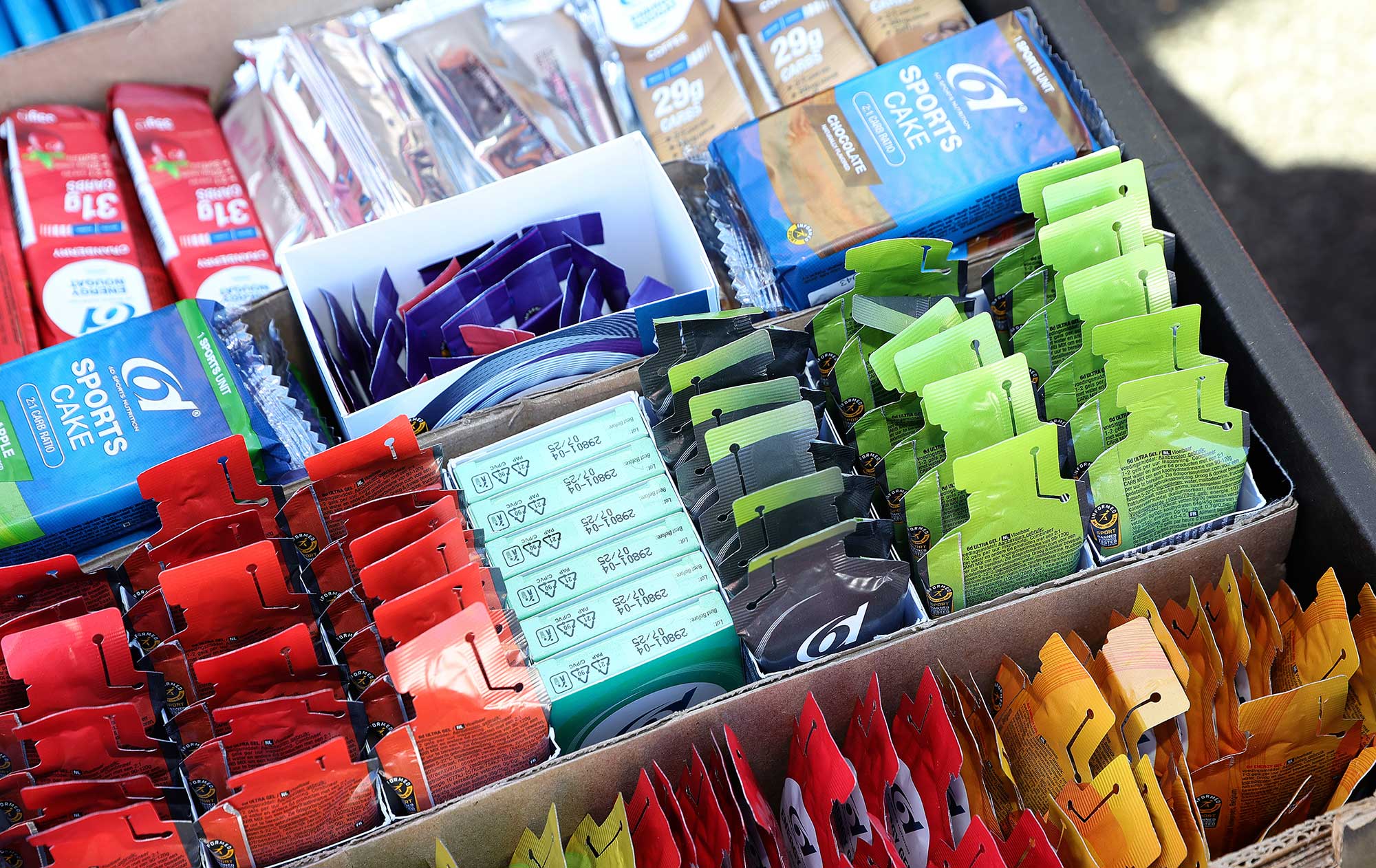
Gut strength
Changes to a fueling strategy aren't something that can be implemented overnight, and they vary between riders depending on their demands within training and their body's needs.
For Hejboer, though, it's a key foundation for a rider's eventual performance on race day.
"One of the most important things is to train your gut as well.
"You need to make your body ready to be able to digest all the high amounts of carbohydrates. So you don't start with that end of June, that's something that's worked on now [in pre-season,]" he adds.
Raising this topic with Louis, he can't be clearer on his verdict.
"It has become crucial to train the gut. And, nowadays, we can't afford to have any riders say 'no, I just can't ingest more than 80 grams an hour,' no, we know it's possible to go higher."
Hejboer and Louis both detail how riders will set aside sessions in pre-season training to push their gut strength to the limit. The Decathlon AG2R La Mondiale staff member estimates that it takes at least six or seven sessions with a high carbohydrate intake to develop the number of transporters in the intestine.
"We start in December, in the first camp, and personally, I would always recommend having at least one session per week where they try to reach more than 100g [of carbohydrates] per hour," he reveals.
In the same way that different types of riders will have different training plans, the same can be said for their nutrition program. Hejboer defines Visma's approach with set templates for the type of training and racing that one of their riders is set to undertake.
"If you do high-intensity training, your carb needs are higher. So then you will also use different race treatment programmes, but also your nutrition during [race day] will be different."
While the relative contribution of carbs, fats and proteins in a rider's daily diet impacts the figure too, the Dutchman reveals that some Visma-Lease a Bike riders could consume as much as 120g of carbohydrates per hour if the demands of their training required it.
"So when you look at training, you can go for 45 grams per hour, or 60, or even 90 or 120, but that's really dependent on the type of training that you do," Hejboer reveals.
While Louis corroborated that approach, adding: "It has to be adapted to the level of practice. If a rider never trains more than three hours in a session, I think there is no point going beyond 90 grams per hour.
But when the going gets tough, especially in the heat of the WorldTour battle, is there a limit to how much a rider can consume during each hour of racing?
Louis didn't have a clear-cut response, mainly because it's still to be explored in the lab. However, he did offer anecdotal evidence to suggest that some riders can consume above 120g of carbohydrates in an hour.
"We haven't tested it in the lab, but I know some of our riders can ingest more than 120g. I know some of them can ingest 140g, even 160g, and they are doing very well. They don't experience any issues at all."
The Frenchman hints that the ceiling to carbohydrate fueling could lie in the ratios of the products currently available.
"For now it's mainly a one to 0.8 ratio between maltodextrin glucose and fructose. Some researchers are looking at a one-to-one ratio, [with] a similar amount of the different carbs. I don't know if that's effective [or] if it can work, but that's definitely a question."
Another question that Louis and his department are looking into is whether a greater carbohydrate intake is always the best practice. Riders weighing 55kg may struggle to consume the same levels of carbohydrates as a 75kg teammate, so should body weight determine the appropriate level of fueling?
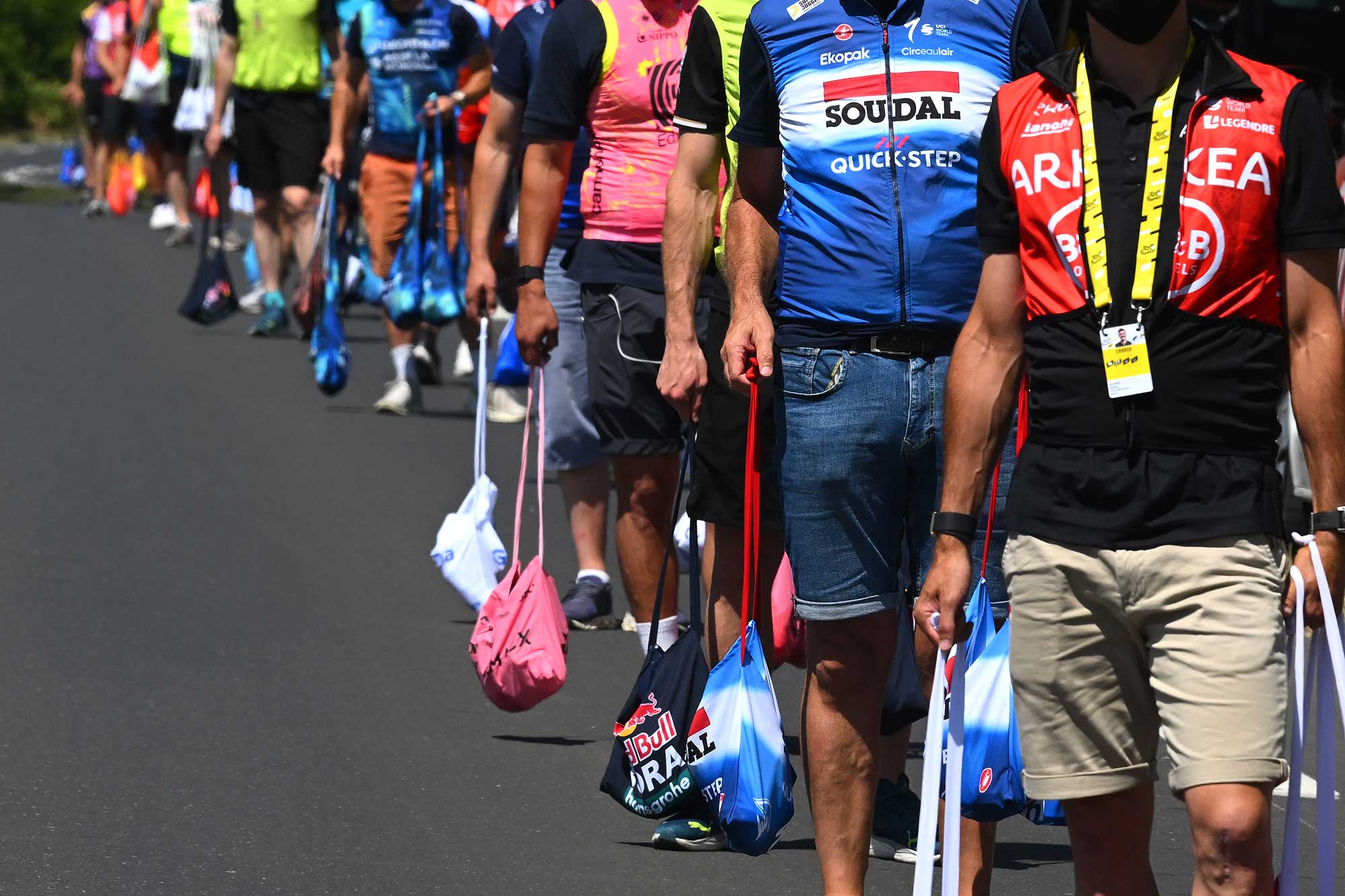
Cycling's thirst for knowledge
The driving force behind this nutrition revolution appears to stem in part from a change in racing habits and philosophies, Deckert believes. Riders are competing less frequently than previous generations, instead spending that time training towards a select few goals.
"Obviously, what has also changed is the approach to racing. If you look back 20 years, you see that the riders did way above 100 race days per year," Deckert says. "This is not the case anymore, and it's not possible anymore. It's not that the riders are working less hard than in the past, but they're now spending their days at altitude, working towards those specific goals. And I think to understand that the training periods can really elevate the levels of the riders, combined with the nutrition, I think we require some changes."
"I think also, the 2020 [cycling season] has kind of shown that you don't always need racing to become a better cyclist," he adds.
Alongside fine-tuning the racing schedules of their riders, teams at the top level of the sport have also dialled in their off-bike approaches for a more holistic approach.
The Tudor coach used his own experiences in the sport over the past few decades to highlight the marked change.
"You just need to look at the staff that teams have. I think you also see a difference between, let's say, more old-school teams and teams who are maybe a little bit ahead.
"10 to 15 years ago, there was really [just] a coach hired by the team, [the] kind of people were leading a team in the past and also making training plans for the riders."
Deckerts feels that now, with riders able to tap into vast resources across coaches, physios, and nutritionists, their whole approach to racing has been transformed, including their diet and fueling plan. This trickles down from the top, experienced riders to the stagiaires and neo-pros.
"For Tudor, the type of riders that we have, with quite some knowledge and experience, I'm talking about [Matteo] Trentin, or Marco Haller or also Julian [Alaphilippe], they're super open and they are sharing their knowledge and experience with the young riders."
Louis believes that this changing of the guard has also accelerated the understanding and appreciation for nutrition within pro cycling, adding: "It has become more and more common and well accepted by everybody, especially the young generation - they know that well. Now you don't have to convince them that it's important to fuel properly. When I started working in cycling a few years ago, we still had the older generation that we had to convince."
Admittedly, though, some habits and cultural customs are harder to shift than others, regardless of cycling's new data-driven age.
"Depending on your culture, your approach to nutrition is probably different. For example, I've lived in England for a number of years now, but even between France and the UK, the approach to nutrition is massively different," Louis highlights.
He explains how these cultural differences impact sports nutrition and recovery, too, adding: "In France, you eat firstly for pleasure. And we can find that also in a [French] cycling team, for example, in a race we always like to take dinner in the evening as an opportunity to have a moment to socialise together.
"In England, I worked in different sports, and that wasn't there. I mean, the dinner was not compulsory, and you could have your dinner on your own or at home or at the club; you would decide what you prefer."
With these cultural considerations in mind, the nutritional strategy has to be implemented so as not to upset the balance between team and individual culture while reducing any potential impacts on recovery. Eating dinner at the optimal time after a race might work well from a nutritional perspective, but could leave you with a disgruntled group of riders and staff as the trade-off - compromise is key.
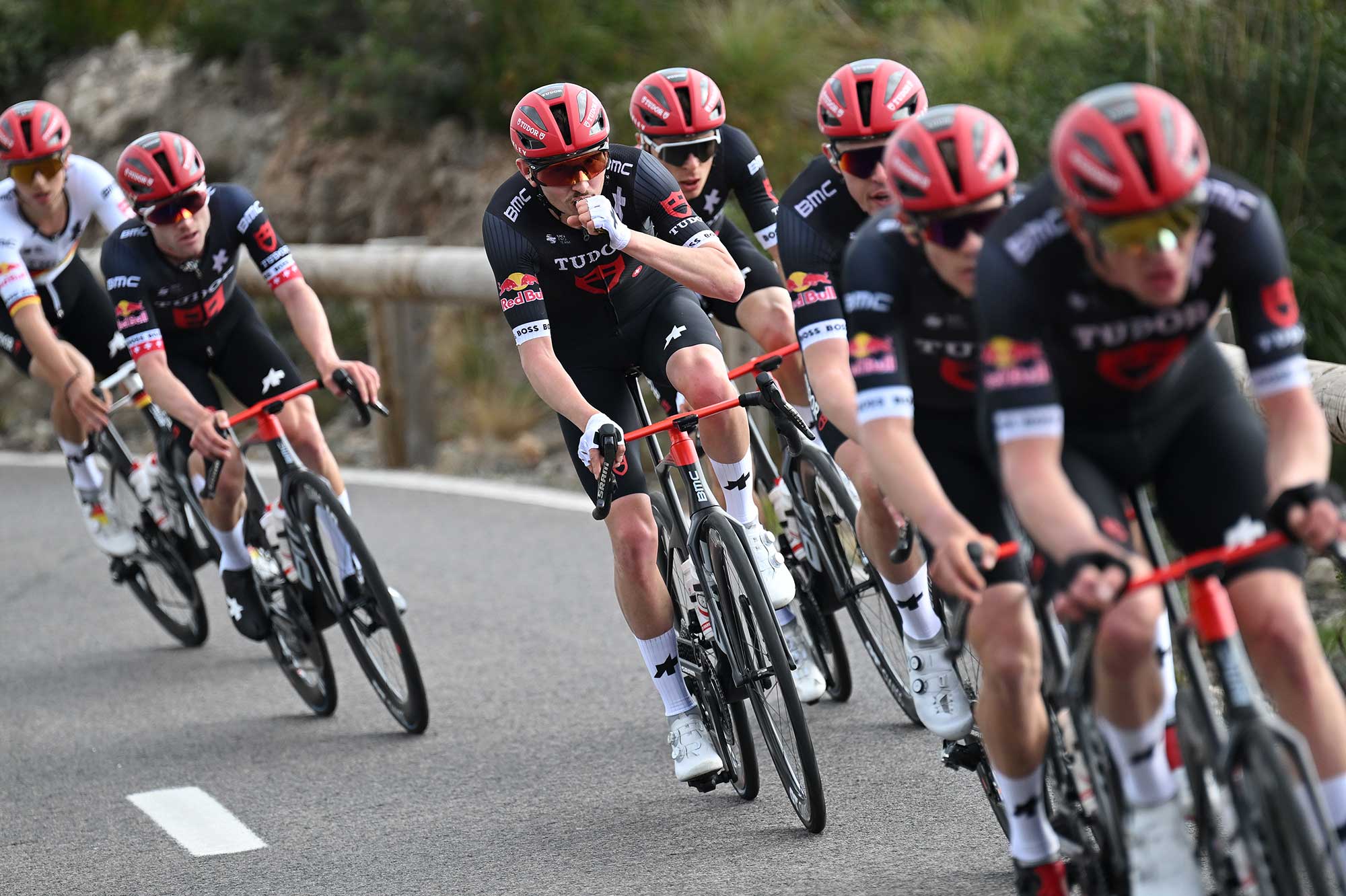
Not just faster performances, but faster recovery too
Alongside an optimised fueling strategy allowing riders to recover after an intense race day, improved nutrition, coupled with a strong training base, also aids recovery from crashes and injuries.
The rehabilitation period for common cycling injuries like broken collarbones and fractured clavicles continues to shrink. Egan Bernal (Ineos Grenadiers), no stranger to unfortunate injury setbacks, was spotted riding less than a week after he fractured his clavicle at the Clásica Jaén Paraiso Interior.
In a recent interview with Velo, Soudal-QuickStep's lead physiotherapist Manu Wemel explains how improvements in data, nutrition, and training have all contributed to cutting down the time away from the bike when a pro cyclist suffers an injury.
“These elites are in top form, with the best diet, the best health. All of that is good for recovery.
“The sleep, the lifestyle, the nutrition is a part of it,” Wemel adds.
Of course, as mentioned at the beginning of this piece, most of us are not professional cyclists and would be unlikely to find ourselves back in the saddle a week after an injury setback, but the principles can be transferred, even if the time periods would naturally be longer.
Hejboer seconds this view, emphasising the value of off-season training towards a rider's ability to recover from setbacks.
"These months are super important. If you are able to build a very big aerobic foundation for the season, then even a crash like a broken collarbone shouldn't have too much of an impact if you already worked really well before."
But what type of nutritional changes can support accelerated recovery from injury?
"It's always very difficult to measure the effects of nutrition directly on the recovery," admits Louis, adding: "We would always try to maintain their muscle mass and stimulate markers of bone turnover. For example, if it's a collarbone [injury], we will try to stimulate bone tissues to regenerate more quickly."
This is encouraged through a high-protein diet, Louis explains.
"We won't have any restrictions [on their diet], especially at the beginning, to make sure they can recover well. And perhaps we could consider some supplements, such as collagen or vitamin D, to make sure they have enough calcium in their diet again to optimise the recovery."
Similarly to Hejboer, the Frenchman believes that when it comes to nutrition and injury recovery, good habits and a proactive mentality will ensure riders are back on their bike quicker.
"In the event of an injury, if you already have [good nutrition] in place, it will help. It will probably be less effort as well, you won't have to drastically change your days during the rest period because, again, it's already in place."
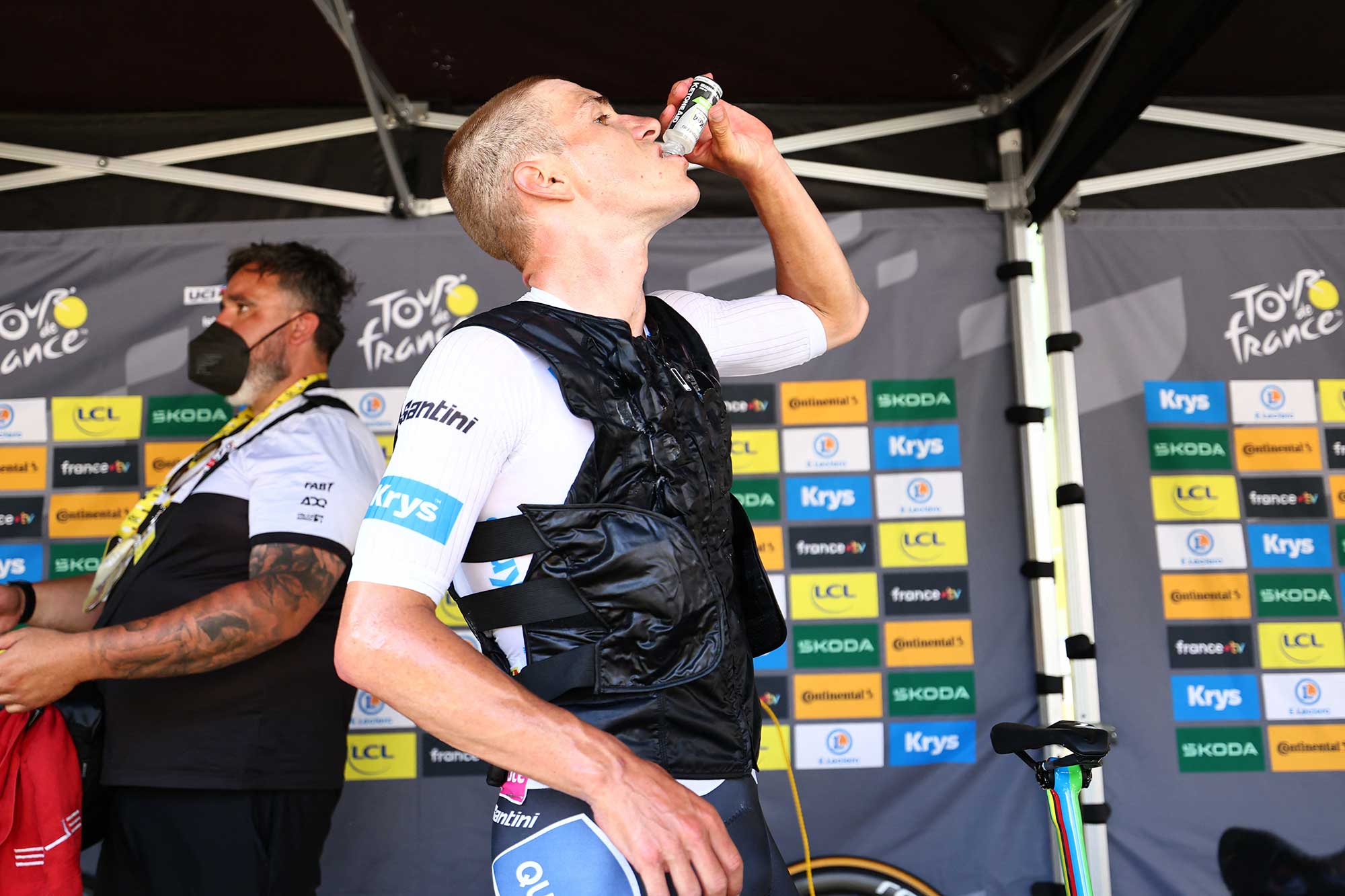
Will carbs always be king?
Less than a decade ago, the relationship between pro cycling and nutrition was almost unrecognisable compared to today's landscape.
Teams continue to pour more resources into nutrition and how it can improve rider performance, but how likely are we to see another drastic switch in direction? Louis seems adamant that there won't be one anytime soon.
"Carbs are the performance fuel and it's the most important fuel for performance. We still need to optimise their intake, and we are not just looking at it on the bike but also pre-race, investigating all the loading strategies."
With the limits to synthesising glycogen, the storage form of carbohydrate in the body, in the muscles and liver, yet to be found, he believes there is still plenty to explore.
The same can be said for supplements, such as the hotly debated ketone shots and bicarbonate tablets.
"For a long time, we have used bicarbonate pre-exercise, before a time trial, for example. But now more and more, we are questioning utilisation directly in-race, like in a four or five-hour race. How could that work? Would it be pertinent to do it? We definitely need to investigate that."
Regardless of which direction it heads next, though, it's clear to see that nutrition is no longer an afterthought in the world of cycling and is now at the forefront of every young rider's mind in their bids to break into the WorldTour.

Pete joined Cyclingnews as Engagement Editor in 2024 having previously worked at GCN as a digital content creator, cutting his teeth in cycling journalism across their app, social media platforms, and website. While studying Journalism at university, he worked as a freelancer for Cycling Weekly reporting on races such as the Giro d’Italia and Milan-San Remo alongside covering the Women’s Super League and non-league football for various titles. Pete has an undeniable passion for sport, with a keen interest in tennis, running and football too.